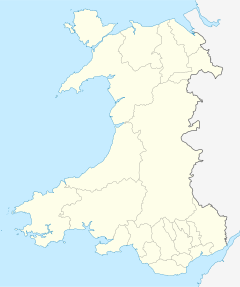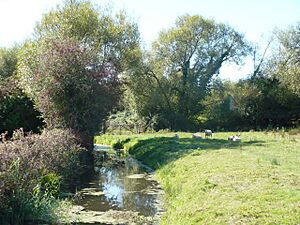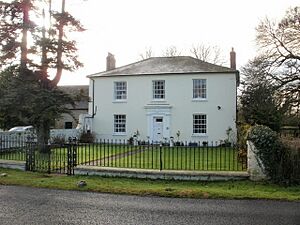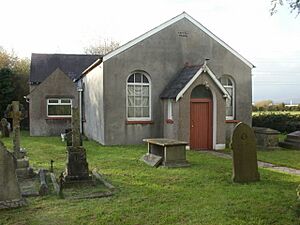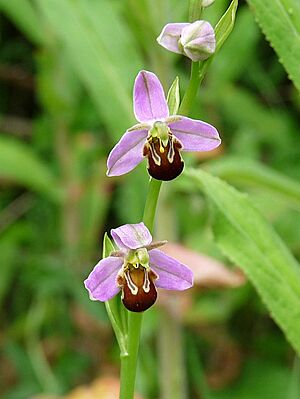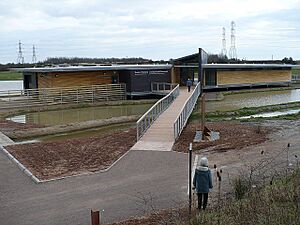Nash, Newport facts for kids
Quick facts for kids Nash
|
|
|---|---|
| Village and community | |
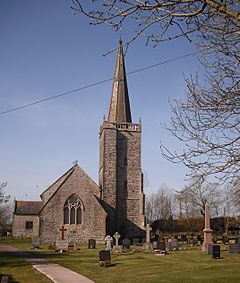 Church of St Mary |
|
| Population | 284 (2011 census) |
| Principal area | |
| Ceremonial county | |
| Country | Wales |
| Sovereign state | United Kingdom |
| Post town | NEWPORT |
| Postcode district | NP18, NP19 |
| Dialling code | 01633 Maindee exchange |
| Ambulance | Welsh |
| EU Parliament | Wales |
| UK Parliament |
|
| Welsh Assembly |
|
| Historical population | ||
|---|---|---|
| Year | Pop. | ±% |
| 2001 | 281 | — |
| 2011 | 284 | +1.1% |
| Source: 2001 and 2011 Censuses | ||
Nash (Welsh: Trefonnen) is a small village in South Wales. It is located just south of the city of Newport. Nash is also a "community," which is a type of local area in Wales.
Contents
Where Did the Name Nash Come From?
The name Nash likely comes from "An Ash," meaning a place with ash trees. Old documents support this, using the Latin phrase "De Fraxino," which also means "of the ash tree."
The Welsh name for the village is Trefonnen. This name also means "Town of the Ash" (tref means town and onnen means ash). Nash and a nearby village called Goldcliff were even shown on an old map from 1573 called the Cambriae Typus.
Exploring Nash's Location
Nash is about 2 miles (3.2 km) south of Newport city. It sits on the Caldicot Levels. This is a large area of land that was once covered by the sea. It has many drainage channels called reens.
The village area includes the Uskmouth power stations. It also has part of the Newport Wetlands nature reserve. The Visitors Centre for the wetlands opened in 2008. The City of Newport campus of Coleg Gwent, sometimes called 'Nash College,' is actually in the next area, Lliswerry.
Nash, Goldcliff, and Whitson are known as the "Three Parishes." They have been connected for a long time. This connection is seen in their geography, how people live, their economy, and their churches.
The Bristol Channel forms the southern border of Nash. The River Usk is to the east. To the north are Lliswerry and the Llanwern steelworks site.
A Glimpse into Nash's Past
In 1901, Nash was home to a few private residents. It also had about 29 businesses. Most of these were farms, with 22 farmers. Other businesses included a blacksmith and wheelwright, a public house called the "Waterloo Inn," a shop-keeper, and a butcher. There was also a mason and a farm bailiff.
A big part of Nash village was lost in 1959. This happened when the Uskmouth power station was built. A large area, including Farmfield House, was used for the power station and its ash-pits.
The main part of Nash is around the church in West Nash. However, much of the village spreads along Broadstreet Common. This area leads to Whitson and Redwick. For many years, the German family ran the village blacksmith shop at Pye Corner. This spot later became a petrol station. Today, it holds the offices for the Caldicot and Wentloog Levels Internal Drainage Board.
About 400 meters (437 yards) south of Pye Corner is Fair Orchard. This building dates back to the early 1800s. It is a Grade II listed building, meaning it is historically important. Nash also had a small infants' school. It was built in 1877 on West Nash Road. The school closed in the early 1980s and is now a private home.
The Church of St Mary
The Church of St Mary in West Nash was built in the 12th century. It is sometimes called "the Cathedral of the Moors." The church is famous for its tall tower and spire. In 1349, the church belonged to Goldcliff Priory.
The church was mostly rebuilt in the 16th century. Only the north wall of the chancel and a special opening called a squint remain from the original Norman church. A squint, or hagioscope, was a narrow opening. It allowed people with illnesses like leprosy or smallpox to see or join the church service. This way, they would not spread their sickness to others.
The church tower is unusual because it is on the north side of the chancel. People believe the church was once much bigger, with an extra section on the north side. In the 1900s, the bellringers' room was used as a temporary place for the bodies of five sailors. They had drowned in a storm near the East Usk Lighthouse. During World War II, the church was very popular, with about 400 people attending services.
After being restored in 2004–2005, the inside of the church is special. It has all its original 18th-century furniture. This includes box pews, a three-decker pulpit, and a gallery at the back. In the fields south of Church Farm, there are old burial mounds (tumuli). There are also remains of what might have been a mediæval house or chapel.
Nash Baptist Chapel
At Pye Corner, there is a building that used to be a Baptist chapel. The chapel opened in 1820 or 1822. It had space for 125 people. Its members included people from the nearby area of Lliswerry.
When a new Baptist church opened in Lliswerry in 1889, some people from the Nash chapel moved there. In the same year, Lliswerry became part of Newport. Over time, fewer people attended the Nash chapel. By 1988, only five members remained. The chapel closed soon after. It has since been changed into a private house.
Modern Nash: Amenities and Environment
To the north of the church, you'll find The Waterloo Inn. This public house is unique because the local parish council owns it. A modern Community Hall has been built nearby for local events.
The East Usk Lighthouse is a well-known landmark. It is located at the edge of the Newport Wetlands Reserve. Some parts of Nash are protected as a Site of Special Scientific Interest (SSSI). This means they are important for their wildlife or geology.
A public bus service, run by Crossgates Coaches, serves the village regularly. The local newspaper is the South Wales Argus, which is published in Newport.
In October 2009, two large wind turbines were put up on land owned by Solutia UK Ltd. These turbines are powerful, each producing 2.5 megawatts of electricity. They can provide up to one-third of the electricity needed for the company's facility.
For many years, there were plans for a new motorway loop south of Newport. This was meant to help with traffic on the existing M4 motorway. Many of these plans would have affected Nash. Because of this, the Nash Community Council joined the "Campaign Against the Levels Motorway" (CALM) Alliance. This group, supported by Friends of the Earth Cymru, opposed the motorway plans. The bypass project was eventually cancelled in July 2009.
In June 2010, a public meeting was held in the village Community Centre. People discussed plans for a waste incinerator in Newport. The "Stop Newport Incinerator Campaign (SNIC)" organized the meeting. They wanted to explain to residents about the possible development on Bowleaze Common land, south of the Llanwern steelworks.


